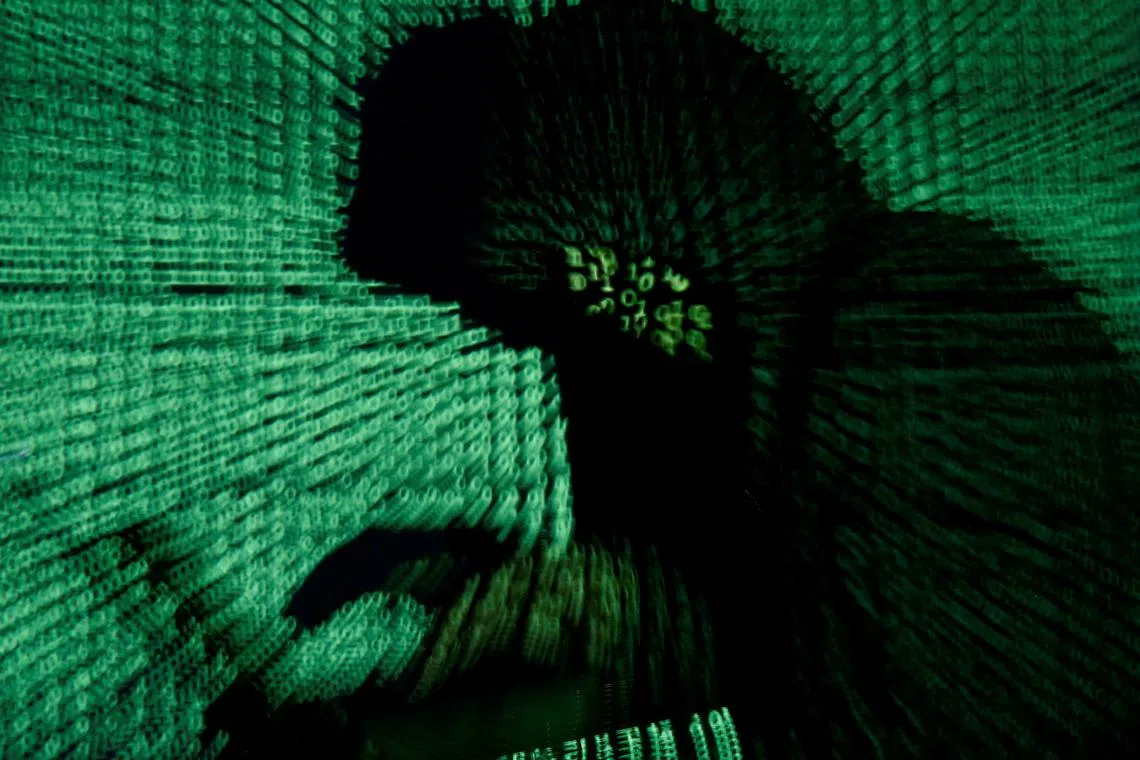Beware of the Snake, Russia’s most sophisticated cyber espionage tool
The malware has been around for about 20 years, and the current version is cunning in how it persistently evades detection and protects itself.
Sign up now: Get ST's newsletters delivered to your inbox

Elite Russian cyber espionage teams put the malware on a target’s computer, copy sensitive information, and send it to Russia.
PHOTO: REUTERS
Greg Skulmoski
Follow topic:
Like most people, I check my e-mails in the morning, wading through a combination of work requests, spam and news alerts peppering my inbox.
But Wednesday brought something different and deeply disturbing. I noticed an alert from the American Cybersecurity and Infrastructure Security Agency (CISA) about some very devious malware that had infected a network of computers.
The malware in question is Snake, a cyber espionage tool deployed by Russia’s Federal Security Service that has been around for about 20 years.
According to CISA, the Snake implant is the “most sophisticated cyber espionage tool designed and used by Centre 16 of Russia’s Federal Security Service for long-term intelligence collection on sensitive targets”.
Stealthy Snake
The Russian Federal Security Service developed the Snake network in 2003 to conduct global cyber espionage operations against the North Atlantic Treaty Organisation (Nato), companies, research institutions, media organisations, financial services, government agencies and more.
So far, it has been detected on Windows, Linux and Mac OS computers in more than 50 countries, including Australia.
Elite Russian cyber espionage teams put the malware on a target’s computer, copy sensitive information of interest, and then send it to Russia. It’s a simple concept, cloaked in masterful technical design.
Since its creation, Russian cyber spies have regularly upgraded the Snake malware to avoid detection. The current version is cunning in how it persistently evades detection and protects itself.
Moreover, the Snake network can disrupt critical industrial control systems that manage our buildings, hospitals, energy systems, water and wastewater systems, among others – so the risks went beyond just intelligence collection.
There are warnings that in a couple of years, bad actors may gain the capability to hijack critical Australian infrastructure and cause unprecedented harm by interfering with physical operations.
Snake hunting
On May 9, the US Department of Justice announced that the Federal Bureau of Investigation (FBI) had finally disrupted the global Snake peer-to-peer network
The covert network allowed infected computers to collect sensitive information. The Snake malware then disguised the sensitive information through sophisticated encryption, and sent it to the spymasters.
Since the Snake malware used custom communication protocols, its covert operations remained undetected for decades. You can think of custom protocols as a way to transmit information so it can go undetected.
However, with Russia’s war in Ukraine and the rise in cyber-security activity over the past few years, the FBI has increased its monitoring of Russian cyber threats.
While the Snake malware is an elegantly designed piece of code, it is complex and needs to be precisely deployed to avoid detection. According to the Department of Justice’s press release, Russian cyber spies were careless in more than a few instances and did not deploy it as designed.
As a result, the Americans discovered Snake, and crafted a response.
Snake bites
The FBI received a court order to dismantle Snake as part of an operation code-named Medusa.
They developed a tool called Perseus that causes the Snake malware to disable itself and stop further infection of other computers. The Perseus tool and instructions are freely available to guide detection, patching and remediation.
The Department of Justice advises that Perseus stops this malware on only computers that are already infected; it does not patch vulnerabilities on other computers, or search for and remove other malware.
Even though the Snake network has been disrupted, the department warned that vulnerabilities may still exist for users, and they should follow safe cyber-security hygiene practices.
Preventing Snake bites
Microsoft has identified five activities that protect against 98 per cent of cyber-security attacks – whether at home or work.
1. Enable multi-factor authentication across all your online accounts and apps
This login process requires multiple steps, such as entering your password, followed by a code received through an SMS message – or even a biometric fingerprint or secret question (favourite drummer? Ringo!).
2. Apply “zero-trust” principles
It’s best practice to authenticate, authorise and continuously validate all system users (internal and external) to ensure they have the right to use the systems. The zero-trust approach should be applied whether you’re using computer systems at work or home.
3. Use modern anti-malware programs
Anti-malware, also known as antivirus software, protects and removes malware from our systems, big and small.
4. Keep up to date
Regular system and software updates not only help keep new applications secure, but also patch vulnerable areas of your system.
5. Protect your data
Make a copy of your important data, whether it’s a physical printout or on an external device disconnected from your network, such as an external drive or USB.
Like most Australians, I have been a victim of a cyber attack. And between the recent Optus data breach and the Woolworths MyDeal and Medibank attacks, people are catching on to just how dire the consequences of these events can be.
We can expect malicious cyber attacks to increase in the future, and their impact will only become more severe. The Snake malware is a sophisticated piece of software that raises yet another concern. But in this case, we have the antidote and can protect ourselves by proactively following the above steps.
Greg Skulmoski is associate professor of project management at Bond University in Australia. This article was first published by
The Conversation.

